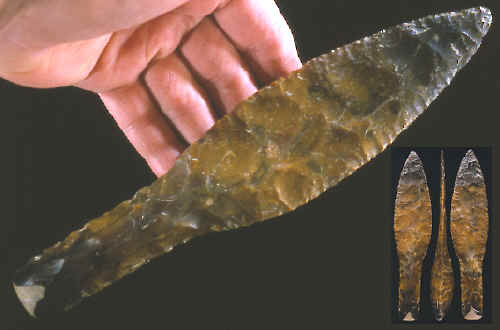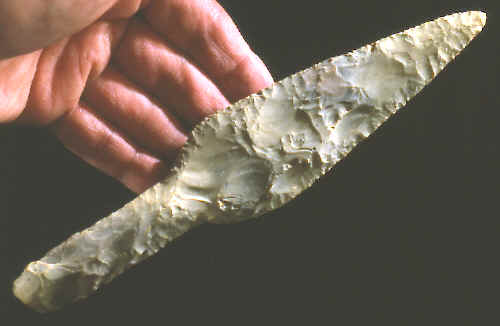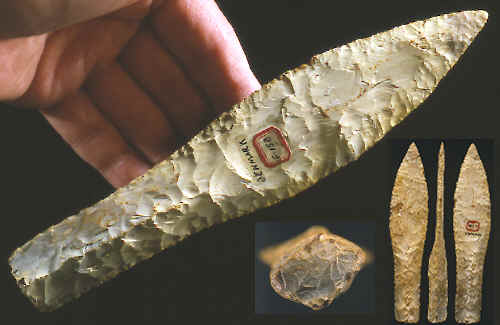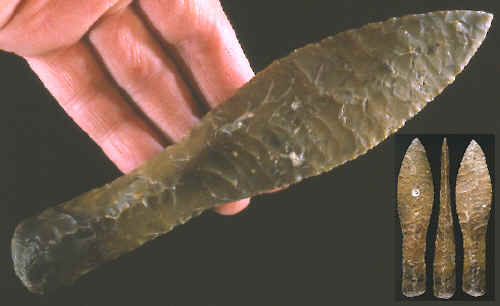|
|
|
There are six main categories of dagger styles that can be divided into as many as 24 different sub-types. The styles begin with type 1's that have the simplest form. The type 2's begin to have thicker handles but after that they begin to develop into very complicated forms with type 3's and 4's that have stitched handles. At the end of the dagger making period type 6's are back to a fairly simple form again. |
|
|
|
|
Type II daggers still do not have stitched handles but unlike the type I daggers that are uniformly thin, the handles on these daggers begin to increase in thickness. The handles also become more obvious which makes them begin to look something like metal daggers, at least in outline. |
|
|
Stitched handles first appear with type III daggers. The stitching or zigzag flaking is on both sides and edges of the handle. This configuration produces a square cross section which is a shape that is very unique among flintknapping cultures anywhere in the world. |
|
|
Type I through type III daggers do not have expanding handles. These three early styles of daggers are considered as a group to be lanceolate forms that were produced in the earliest phase of the dagger making period. |
|
| CONTINUE ON TO PAGE Three | |
|
"REFERENCES"
1872,
Sir John Lubbock, "Pre-Historic Times, Ancient Remains and the
Manners & Customs of Modern Savages" |
|




